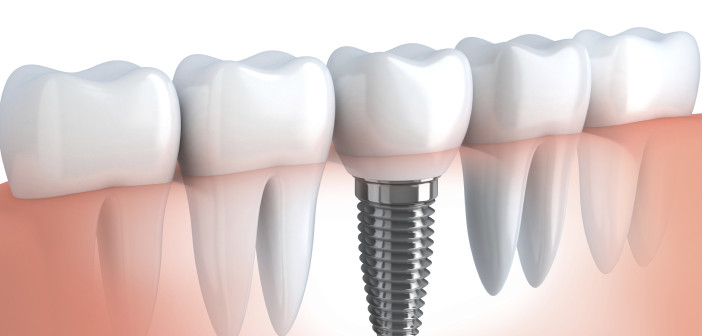Tooth loss continues to take place at an astonishing rate, even with some amazing advances to the field of oral health. While some patients may consider tooth loss to be merely cosmetic, failing to find a long-term or permanent solution to this condition could lead to a slew of other health issues. This is why so many patients have turned to dental implants in order to quickly restore their smile for both functionality and appearance. For those that are struggling with one or more missing teeth, here is a closer look at tooth loss in general, who is eligible for dental implants, and how exactly this process is carried out.
Understanding Tooth Loss
It remains an unfortunate statistic that nearly 24 percent of adults over the age of 65 have absolutely no teeth remaining. Even with amazing advances to the field of oral health and a variety of preventative treatments, most adults are going to lose at least a handful of teeth throughout their life time. While some may think that tooth loss is inevitable, there are quite a few factors that will drastically increase one’s chances of losing teeth. Outside of issues such as trauma to the face and even genetics, other common causes include gum disease, infections, and chipped teeth. Each of these issues will also be exacerbated by issues such as diabetes, improper oral hygiene habits, and even the foods that are eaten every day.
The Importance of Long-Term Treatments
Tooth loss will not only affect an individual’s appearance, it will also lead to issues with one’s speech as well as eating. Unfortunately, these few problems are only the tip of the iceberg as untreated tooth loss will eventually affect the entirety of the mouth. According to Pike Dentistry, “Over time, larger gaps in the teeth will cause the surrounding teeth to “slouch” inwards due to a lack of support. Over the long-term, this can cause a misaligned smile, issues with jaw, headaches, an increased likelihood of periodontal disease, and much more.” These are just a few of the reasons that permanent and immediate treatment is more important than ever.
Before the Procedure
Getting one or more dental implants installed is going to require a few trips to the dentist as well as the potential for multiple trips to a specialist for the procedure itself or x-rays. First, the dental health specialist will need to completely inspect the mouth to ensure that there are no other oral health problems. If there are issues with one’s jaw or the soft tissue in the mouth, such as deteriorating bones or periodontal disease, the implants may need to be postponed until those issues are treated. The doctor will then begin the process of carefully mapping the mouth in order to create customized teeth and decide on the best options for the procedure itself.
The Procedure
Once all of the preparations have been made, the patient will show up and be put under with anesthesia for the final procedure. Currently, the success rate for dental implants is well above 90 percent in patients that are relatively healthy. The dentist begins by anchoring metal or composite posts into the jaw in the area of the missing teeth. Once the jaw has healed and the soft tissue has formed a bond with the post, customized teeth with then be attached to the posts to recreate the form and function of one’s smile.
In just a short period of time, the area around the dental implants will fully heal and the implanted teeth can be treated just as if they are the natural teeth. Many of the same hygiene habits will still be carried out and the patient will once again be able to smile and eat with confidence. While studies are still being carried out, implants that are installed on relatively healthy patients that diligently care for their teeth will often be able to enjoy their reinvented smile for 40 years or longer.




